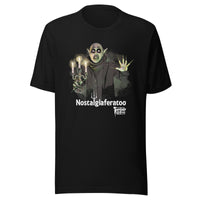All in the Family used an unexpected warm-up act before each show
The important job was done by a familiar face!

Especially back in the '60s and '70s, lots of acclaimed sitcoms used a technique called "canned laughter" to imply that their studio audience was enjoying each joke. Sometimes it was used to supplement the real laughter from the crowd of viewers watching the taping. Other times, there was no studio audience, and the canned laughter was 100% phony. After all, nobody sat around watching them draw The Flintstones. In those cases, "canned laughter" was used so viewers at home knew when to laugh. It was written into these shows. A big joke, then a big moment of fake chuckles, and the people watching on TV felt like the show was funnier for it.
All in the Family did not employ canned laughter.
It relied, instead, on the tradition of a warm-up act. Many series, usually of the variety ilk, employed a lesser-known comic to take the stage in the moments before the taping began. In these scenarios, the comedian would do what they could to allay the audience's fears and discomforts. Laughter oftentimes begets laughter, so it's the warm-up act's job to get the ha-ha's flowing.
All in the Family, was rare, though, in that it did not use a traditional comedian as the show's warm-up act.
Instead, series creator, producer, and head writer Norman Lear would greet the crowd ahead of each new episode. According to the 1973 book TV's First Family by Louis Solomon, Lear did a commendable job of welcoming the audience into 704 Hauser Street.
"He is genial, folksy, informal in a manner and sports clothes," wrote Solomon. "He is benignly bald with a luxuriant gray mustache that droops Western style to embrace his chin. His face is fiftyish, his trim athletic figure much younger.
"After expressing his gratitude that the audience has favored him with its presence, Lear tells some funnies. He writes his own jokes. The audience likes him and the jokes. He builds their anticipation for the stars by first introducing director John Rich. And then, timing it for maximum effect, he brings out to excited applause Carroll O'Connor, then Jean Stapleton, followed by Rob Reiner, and finally Sally Struthers. With bows and gags, and the audience warmed up to his satisfaction, Lear disappears into the control room."
However, while the warm-up job may be done, Lear held enough other jobs on set that he was never too far away.
"Forgotten but not gone, Lear hovers over the control room monitors during the taping. After the first audience files out there is a meeting with the company over which he presides. The performances, camera work, and the lines are criticized. Some of the jokes didn't get laughs. Bits of business didn't work. Disagreements get heated, and tempers flare. Lear is the boss, but he has to live with the family he has fathered. So while he can override his actors, writers, and director, and he does, he tries to keep harmony."
Leave it to Norman Lear to find the position in a production even more difficult than the warm-up act.









4 Comments


























